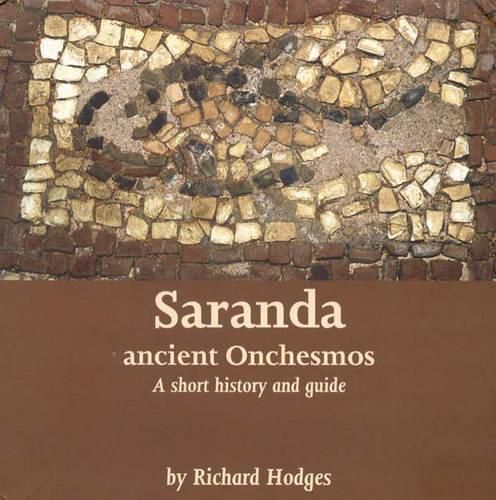Readings Newsletter
Become a Readings Member to make your shopping experience even easier.
Sign in or sign up for free!
You’re not far away from qualifying for FREE standard shipping within Australia
You’ve qualified for FREE standard shipping within Australia
The cart is loading…






This small, but beautifully illustrated guide book covers the ancient port of Saranda. Twenty kilometres north of the UNESCO site of Butrint, Saranda was a harbour during Roman times and again in the Ottoman era. Saranda’s name has changed several times, each time reflecting its Mediterranean-wide connections:
Onchesmos comes from Anchises, the Trojan, whose union with Aphrodite on Mt Ida resulted in a son, Aeneas. Dionysius of Halicarnassus called Onchesmos the harbour of Anchises and tells of how the Trojans dedicated a temple to Aphrodite there. Archaeological interest began in the port in 1913, during the second Balkan war, undertaken to show the site’s Greekness in the face of Albanian nationalism. Surveys were made on behalf of the state from the 1950s to ‘90s, when archaeology was stopped in the face of construction and development.
$9.00 standard shipping within Australia
FREE standard shipping within Australia for orders over $100.00
Express & International shipping calculated at checkout
This small, but beautifully illustrated guide book covers the ancient port of Saranda. Twenty kilometres north of the UNESCO site of Butrint, Saranda was a harbour during Roman times and again in the Ottoman era. Saranda’s name has changed several times, each time reflecting its Mediterranean-wide connections:
Onchesmos comes from Anchises, the Trojan, whose union with Aphrodite on Mt Ida resulted in a son, Aeneas. Dionysius of Halicarnassus called Onchesmos the harbour of Anchises and tells of how the Trojans dedicated a temple to Aphrodite there. Archaeological interest began in the port in 1913, during the second Balkan war, undertaken to show the site’s Greekness in the face of Albanian nationalism. Surveys were made on behalf of the state from the 1950s to ‘90s, when archaeology was stopped in the face of construction and development.